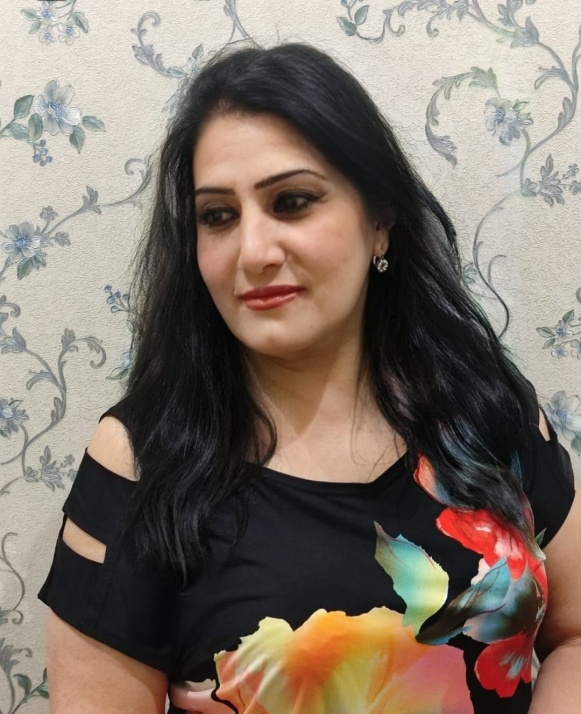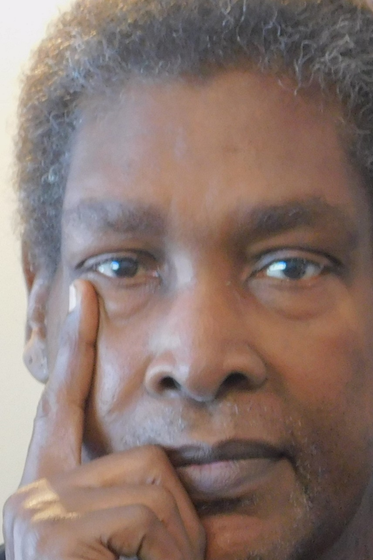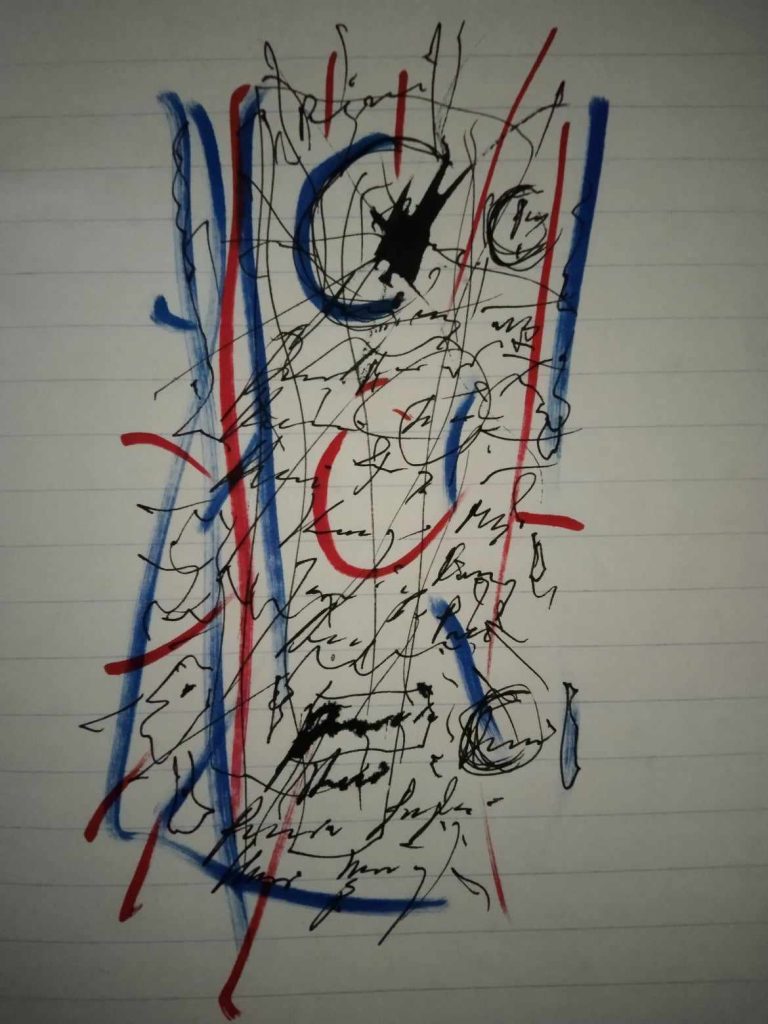To Be, Or—Oh Never Mind!
Yes, Mr. Shakespeare,
We know your works have been
Read, and absorbed,
By a robot.
That’s modern culture, ala 2023!
Yes, you were famous once,
We know,
But what’s important today
Is the skill of the robots!
Yes, your plays are amazing,
But they can be imitated,
Even improved upon
By robots,
by non-human
technological entities!
In fact, we’ve shown
One of our bots your letter
Protesting their existence!
Here’s its response--in your style:
“It’s a tale told by an idiot,
full of sound and fury,
signifying NOTHING!”
Feel free to contact us again!
]
Category Archives: CHAOS
Art from Grzegorz Wroblewski
Poetry from Elmaya Jabbarova

I wish it was that garden again... I wish it was that garden again... Once ours Then sold, As I fall, I remember I'm slowly getting sad. My memories of you Dissolves like a wash It opens one by one Like a sheet in a notebook. I say oh my See how much of my life This cruel time is over. I wish it was back then... Hidden from the fence - hidden, We looked, we looked. Even if the seers Come to justice, to the screw We would be ashamed He kept this secret. Half, when I see you, the world was mine We were happy, we laughed, We fell into dreams, We didn't get what we wanted. We would hold hands, We took wings and flew, Floating in the dark sky, Let's be friends with the birds. Do you see my love Wishes are sweeter than honey, Moments with you Written in my memory. games of fate, Dig a well very deep, The wind blowing between us Be it cold or cool, How much breath I have Dream and copy I will engrave in my heart I will always love you. I wish it was that garden again! ... 06/05/2023. Elmaya Jabbarova was born in Azerbaijan. She is a poet, writer, reciter, and translator. Her poems were published in the regional newspapers «Sharginsesi», «Ziya», «Hekari», literary collections «Turan», «Karabakh is Azerbaijan!», «Zafar», «Buta», foreign Anthologies «Silk Road Arabian Nights», «Nano poem for Africa», «JuntosporlasLetras 1;2», «Kafiye.net» in Turkey, in the African's CAJ magazine, Bangladesh's Red Times magazine, «Prodigy Published» magazine. She performed her poems live on Bangladesh Uddan TV, at the II Spain Book Fair 1ra Feria Virtual del Libro Panama, Bolivia, Uruguay, France, Portugal, USA.
Poetry from Sayani Mukherjee
Roses The roses of July Are so pretty A pretty good problem To be This beautiful Insanely fragile Yet beautiful Helen's face I can see Roses in July Just so pretty Beautiful, a maiden robed Our own reflections.
Poetry from Michael Robinson

WALKING with JESUS Matthew 16:21 (NIV) -”Then Jesus said to his disciples, “Whoever wants to be my disciple must deny themselves and take up their cross and follow me.” My witness is that Jesus told me to pick up my Cross and follow Him. I have found my life in walking with Jesus, carrying my cross in all kinds of situations. Walking through the light and darkness. Walking through the dry seasons in my life and the storms in my life. Walking each step following You, Lord. Your yoke is easy for on my own there is pain and sorrow for what I have lost. Your salvation has removed that pain and loss. I have been restored. My salvation and redemption have brought me eternal salvation. For I walk with you, and each step is a step of joy and faithfulness. In this life, there is peace, contentment, and joy. In this life, there is freedom from the pain and suffering that had held me captive. My soul is following your commandments to love others as myself. I love myself because of your sacrifice on the Cross for me. It is that ultimate denial of self which brought my freedom. Freedom brought with Your suffering and humiliation and finally Your Crucifixion. A sacrifice of the ultimate love for me dying on the Cross. You gave me a glimpse of eternal life preparing me for God's Kingdom. You showed me the Kingdom within me: mercy and forgiveness and gratitude. It is this mercy that brings me before your Glorious Father, as I kneel, at the altar of my heart. Moments in solitude and quietness are the essence of who I was created to be. Yes, I will pick up my Cross and follow you for you are my Lord, King of my redemption. CONVERSATIONS with GOD For Dee my mother My foster mother Dee always spoke about God and Jesus Christ. God knows, she would say, and God doesn't like ugly. She always listened to the gospel station that was her life and took care of us children. Washing and ironing clothes and cooking our meals and preparing us for school. Washing our faces and combing our hair and putting Vaseline on our ashy skin. Our clothes were always clean. We were taught manners and to be respectful to all adults. Mostly, I remembered feeling alone and empty since my biological mother had left me. Dee took me in when I was two weeks old. I lived with her until my aunt adopted me at eight years of age. My conversations with God started at eight. I remembered Dee always talking to God aloud. Talking to God came naturally to me. Dee always talked to Jesus and she insisted He listened. Maybe He would hear my prayers. My fears and loneliness and anxiety were overwhelming. Walking the streets of D.C., I was afraid and felt terrorized with good cause because of the violence and turmoil in the streets. My aunt adopted me at age eight. My aunt was Catholic, and being Catholic, she took me to Mass every weekday and Saturday and on Sundays. It was at a morning mass when the priest summoned me to the altar. I was to assist him on the altar to serve communion. This was my invitation to serve God as well. I stepped onto the altar. God wanted me in my street clothes. God wanted me. I genuflected (kneeling and making the sign of the Cross). The priest opened the gate and I stepped onto the altar for the first time, standing to the right side of the priest carrying the host plate (this is used to catch the consecrated host so it won’t touch the floor if it falls.) He served communion to each person, as they kneeled at the altar to receive Communion. He walked to each person kneeling with their eyes closed and their tongue out receiving the body of Christ. There was a sense of reverence for helping serve the body of Christ. I felt a personal calling to serve God and a closeness to God. Looking back on this experience. I realized God was real and wanted me to serve Him. This feeling of connecting to God never left me. My conversations with God began shortly after that first encounter. I had a place where I felt wanted. It was Holy Redeemer Church. From ages eight to ten, my refuge was the church. The calmness of God’s presence was the same as that first time serving communion. I longed for God’s calming presence within me. There was a calling within me to recapture that loving and warm presence of God. I sat in the front pew and observed the altar candle burning (which served as a reminder of God's light always burning). I studied the white candle burning as it flicked side to side. This was God’s light and I watched it calmly. The colorful votive candles burned with various colors. red, blue, and yellow as I sat there alone with the Holy Trinity (Father, Son, and Holy Ghost.) The ceiling was covered with murals covering the dome. Angels adorned the dome in a pretty sky-blue background with white wings. There were statutes of Mary and Joseph and other Holy figures. This was the Holy family of Jesus.
Poetry from Jason Ryberg
1) Plot Hole
The light at the end
of the tunnel turned out to
be a gaping plot
hole in my argument,
so, I was forced to freestyle.
2) Psychic Warfare
I’m still convinced that
someone in their employ was
waging psychic war-
fare upon me in order
to gain access to all my
family’s secret recipes.
3) Places of Residence
Is there a name for
the frequent dreaming of one’s
former places of
residence, specifically
dreams of still living there-in?
4) Daffodils, Sweat Bees, Helicopters
Daffodils in an
old salsa jar half-full of
well water, sitting
on an old deck table in
the sun, while sweat bees circle
around like helicopters.
5) Progress, If Not Victory, So Much
A
mile
or two
of sun-cracked
two-lane blacktop with
about three feet of a gravel
shoulder, sloping off to a ditch by the side of the
road, an old mailbox full of bullet holes,
over-flowing with who knows how many days?
weeks? months? of mail; and there’s something
about the smell of
newly laid tarmac first thing in
the morning that for
some reason
always
makes
me
think
of
progress.
Jason Ryberg is the author of eighteen books of poetry,
six screenplays, a few short stories, a box full of folders,
notebooks and scraps of paper that could one day be
(loosely) construed as a novel, and countless
love letters, never sent. He is currently an artist-in-
residence at both The Prospero Institute of Disquieted
P/o/e/t/i/c/s and the Osage Arts Community, and is an
editor and designer at Spartan Books. His latest collection
of poems is “Fence Post Blues (River Dog Press, 2023).”
He lives part-time in Kansas City, MO with a rooster
named Little Red and a Billy-goat named Giuseppe,
and part-time somewhere in the Ozarks, near the
Gasconade River, where there are also many strange
and wonderful woodland critters.
Poetry from Mark Young
Dictum It is when words fall that they lose their im- pact. Must remain in the air for more than a second or two, cling- ing to clothing or twist- ing upwards in the way that cigarette smoke does. Articles I like using articles to end a line. Sometimes an article of faith, sometimes of clothing. & occasionally a particle of speech to give the space between lines that extra bit of frisson. It is a continuity, the way forward, not the end of the line that some flat-earthers seem to think it is. The Clearing Not how I re- remembered or would have left it. Too much foliage, as if no one has been here to tidy up since I last came by. Tradition always suffers when the oracles move into the marketplaces. A kind of census The mind’s mosaic has been taken in for intro- spection. Why learn for the sake of learning? Un- necessary facts might just as well be fiction for all the use we get from them. The fragments are taken out for sensual inspection. Left so the air can breathe on them. Those that acquire color are kept to form new pathways of the mind. The bland are used to pebble pathways in the garden. Another Sunflower Sutra In sunflower I find pistil & stamen, their output arranged in a Fibonacci spiral. & following on As the sun sets, the credits start to roll. This day was brought to you by the seven ayem garbage col- lectors, a poem that glistened just beyond the edges of the trawl- ing net, Sketches of Spain with Miles Davis & Gil Evans, four coldcall intrusions, all declined, The Last Samurai on cable, washing off the line. No special effects were provided by either Industrial Light & Ma- gic or Marvel Studios.


